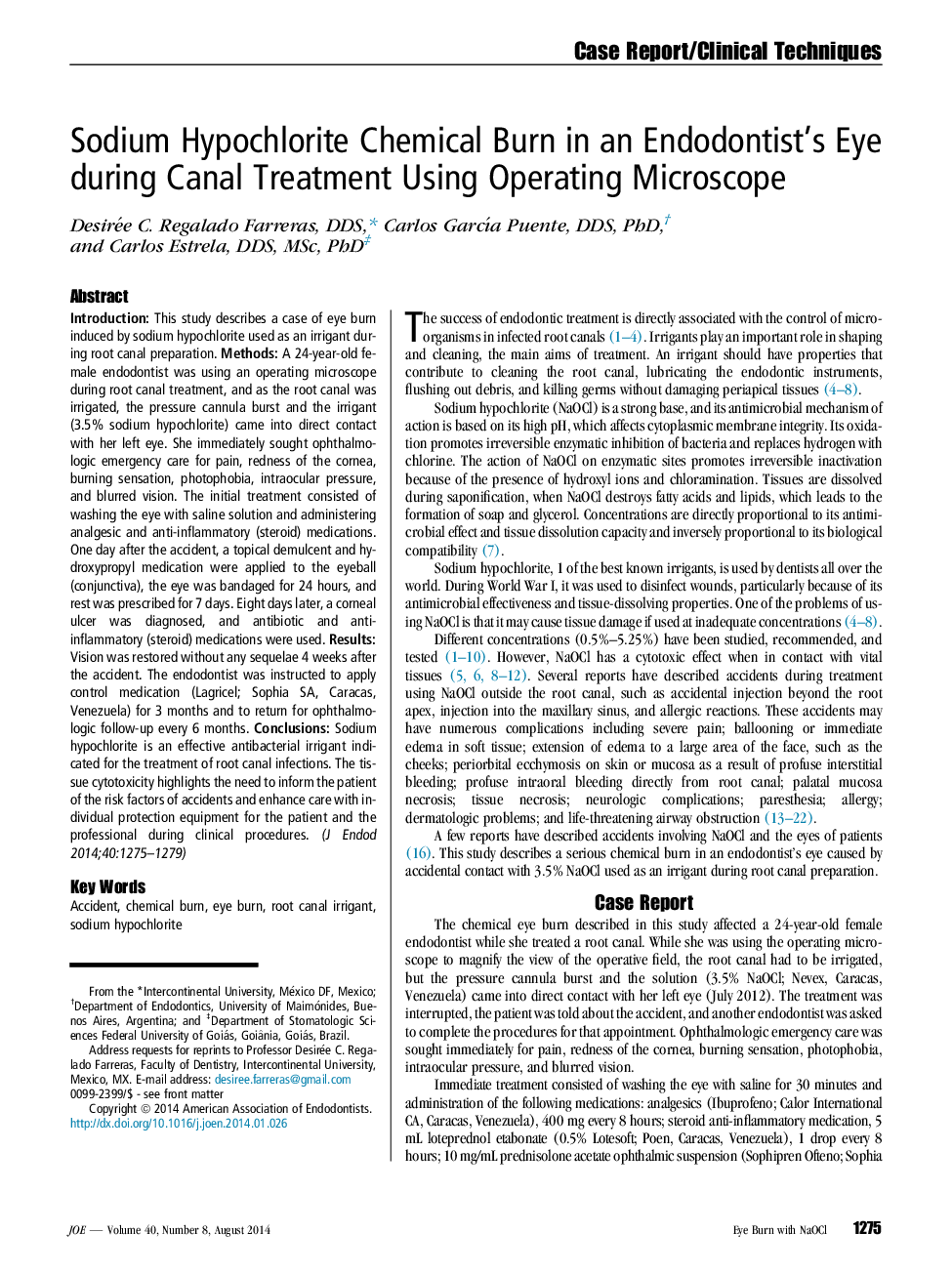| Article ID | Journal | Published Year | Pages | File Type |
|---|---|---|---|---|
| 3146765 | Journal of Endodontics | 2014 | 5 Pages |
IntroductionThis study describes a case of eye burn induced by sodium hypochlorite used as an irrigant during root canal preparation.MethodsA 24-year-old female endodontist was using an operating microscope during root canal treatment, and as the root canal was irrigated, the pressure cannula burst and the irrigant (3.5% sodium hypochlorite) came into direct contact with her left eye. She immediately sought ophthalmologic emergency care for pain, redness of the cornea, burning sensation, photophobia, intraocular pressure, and blurred vision. The initial treatment consisted of washing the eye with saline solution and administering analgesic and anti-inflammatory (steroid) medications. One day after the accident, a topical demulcent and hydroxypropyl medication were applied to the eyeball (conjunctiva), the eye was bandaged for 24 hours, and rest was prescribed for 7 days. Eight days later, a corneal ulcer was diagnosed, and antibiotic and anti-inflammatory (steroid) medications were used.ResultsVision was restored without any sequelae 4 weeks after the accident. The endodontist was instructed to apply control medication (Lagricel; Sophia SA, Caracas, Venezuela) for 3 months and to return for ophthalmologic follow-up every 6 months.ConclusionsSodium hypochlorite is an effective antibacterial irrigant indicated for the treatment of root canal infections. The tissue cytotoxicity highlights the need to inform the patient of the risk factors of accidents and enhance care with individual protection equipment for the patient and the professional during clinical procedures.
